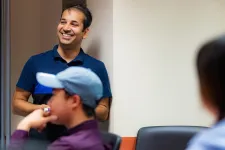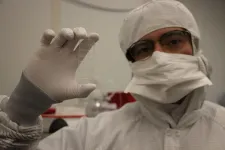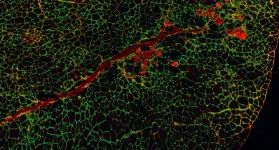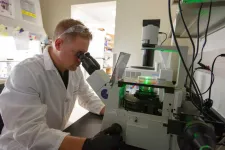(Press-News.org) WYOMISSING, Pa. -- Teaching people to become entrepreneurs requires more than just passing on entrepreneurial skills, according to a team of Penn State Berks-led researchers. Would-be entrepreneurs also need to understand -- and negotiate -- the barriers that they might face.
In a study, researchers built a multidimensional model to measure the effectiveness of entrepreneurship education. The model not only includes teaching entrepreneurial skills, but also addresses the students' intentions to start a business and their perceptions of the barriers they might encounter when starting a business.
"There are a lot of studies in the literature that focus on, for example, how entrepreneurship education influences the students' competence in starting a business," said Abdullah Konak, professor of information sciences and technology. "But, our model does not look at it from one perspective. We look at it from three perspectives -- competencies, intentions and barriers. What we found was that entrepreneurship education helps to increase the students' skills. If those skills help to reduce the barriers, then it increases their intentions to start a business."
Traditionally, much of entrepreneurship education offers students lessons to develop skills, for example, offering them an understanding of finance, marketing, intellectual property and team management, Konak added. However, the acquisition of these skills may not directly lead people to start businesses.
"There are a lot of reasons why people don't want to become entrepreneurs, but one of those reasons is that they see barriers," said Konak, who is also an Institute for Computational and Data Sciences associate. "Maybe they're not sure on how to start a business, maybe they're worried it will take too much time, maybe they think they don't know the domain well enough -- there are a lot of issues."
According to the researchers, who report their findings in a recent issue of Studies in Educational Evaluation, lessons can be designed so that they not only teach entrepreneurial skills, but also show that barriers may not be as daunting as the students believe.
"For example, take a simple step, like registering a business," said Konak. "One lesson we use is to have the students go to a government website and search for company names and whether the business they are visualizing is registered. Then, the students learn the steps of what it takes to register a business in Pennsylvania. This is a very simple assignment, but I think it helps them remove a barrier."
Entrepreneurism helps the economy in several ways, said Konak, who worked with Haibin Liu, associate professor at the Institute of Employment and Entrepreneurship Education at Northeast Normal University, who was also the paper's first author, and Sadan Kulturel-Konak, professor of management information systems and the director of Flemming Creativity, Entrepreneurship and Economic Development (CEED) Center at Penn State Berks. Liu visited Penn State Berks between 2018 and 2020 to collaborate with Kulturel-Konak and Konak on entrepreneurship education.
First, entrepreneurism drives economic development and growth, he said.
"There is a real strong connection between well-being of people, economic growth and entrepreneurial activity," said Konak. "Entrepreneurial activity is how we grow the economy -- not just in the U.S., but globally. A lot of people might think of entrepreneurism as just a money-making activity, but it's actually about growing the entire pie for everyone."
He added that entrepreneurship education can also help established businesses by training employees to become more innovative workers.
"Our goal in entrepreneurship education is not just about starting up businesses, but it's actually about instilling an innovative mindset in our students," Konak said. "That's the broader goal of entrepreneurship education."
The researchers collected data from 416 college students at two different campuses of a major Chinese university located in China. The students were business, engineering and social sciences undergraduate students who participated in a four-month entrepreneurship education program. The participants were asked a series of questions about their participation in entrepreneurship education programs, their intentions to become an entrepreneur and their understanding of entrepreneurial barriers.
Penn State Berks has a long history of entrepreneurship studies, said Konak. The Flemming Creativity, Entrepreneurship, and Economic Development Center (CEED) Center, for example, was established in the fall of 2011 to inspire an entrepreneurial spirit and innovative thinking in the Penn State Berks local community.
In the future, the team plans to continue to develop and refine these models of entrepreneurship education.
INFORMATION:
HOUSTON -- (April 7, 2021) -- Rice University computer scientists have demonstrated artificial intelligence (AI) software that runs on commodity processors and trains deep neural networks 15 times faster than platforms based on graphics processors.
"The cost of training is the actual bottleneck in AI," said Anshumali Shrivastava, an assistant professor of computer science at Rice's Brown School of Engineering. "Companies are spending millions of dollars a week just to train and fine-tune their AI workloads."
Shrivastava and collaborators from Rice and Intel will present research that addresses that bottleneck April 8 at the machine learning systems conference MLSys.
Deep neural networks ...
In an article published in the April 8 issue of Nature, the National Institutes of Health's Somatic Cell Gene Editing Consortium provided a detailed update on the progress of their nationwide effort to develop safer and more effective methods to edit the genomes of disease-relevant somatic cells and reduce the burden of disease caused by genetic changes.
Gene editing allows scientists to modify sections of an organism's DNA and is considered a promising treatment for a number of genetic diseases. There have been numerous advances in the laboratory over the last few decades, but there are still many challenges to overcome before gene editing can be widely used in the patient population. Launched in 2018, the Somatic Cell Gene Editing Consortium ...
A natural brilliant blue coloring has been discovered by an international team of researchers including chemists at the University of California, Davis. The new cyan blue, obtained from red cabbage, could be an alternative to synthetic blue food colorings such as the widely used FD&C Blue No. 1. The work is published April 7 in Science Advances.
"Blue colors are really quite rare in nature - a lot of them are really reds and purples," said Pamela Denish, a graduate student working with Professor Justin Siegel at the UC Davis Department of Chemistry and Innovation Institute for Food and Health.
Having ...
Scientists have developed a long-sought naturally derived cyan blue colorant sourced from red cabbage anthocyanin pigments that may offer an alternative to the industry standard blue dye, although more testing is needed to determine the compound's safety. The novel colorant, which was developed using an enzyme that converts a range of anthocyanins to one with the ideal wavelength, remains highly stable over time and may also produce better green colors than those derived from existing natural blue colorants. Several research programs around the world are dedicated to the hunt for a natural alternative to FD&C Blue No.1 - a challenging effort given that cyan blue is one of the rarest colors in nature. While previous research has shown that ...
DURHAM, N.C. -- An interdisciplinary team of scientists at Duke University has developed a highly sensitive and rapid diagnostic test for Ebola virus (EBOV) infection. In monkeys infected with Ebola, this diagnostic, called the D4-assay, proved to be 1000 times more sensitive than the currently approved rapid diagnostic test and capable of detecting the virus a full day earlier than the gold standard polymerase chain reaction (PCR) test.
This work, which appears in Science Translational Medicine on April 7, was done by biomedical engineers, molecular ...
Progression of Duchenne Muscle Dystrophy (DMD) can be delayed in mice by supplementing their diets with Urolithin A, according to new results reported today. The findings, published in Science Translational Medicine, raise hopes that new treatment options could one-day be developed for DMD, an uncurable genetic condition characterized by progressive muscle degeneration. About 1 in 3,500 boys are born with DMD, which usually develops in childhood and significantly reduces life expectancy.
The new research carried out at the laboratory of Professor Johan Auwerx, ...
The lungs were for a long time considered to be sterile in health, while in diseases like chronic obstructive pulmonary disease (COPD) failure in immune mechanisms were thought to allow microorganisms to proliferate and persist. New sequencing techniques have shown that several microorganisms reside in the lungs of healthy individuals, as well. Few studies have examined the fungal community in COPD and compared it to healthy controls using such techniques. According to the study findings, the compositions of these environments seem to be unaffected by the use of inhaled steroids.
Lungs have a unique fungal environment
The Bergen COPD Microbiome study (short name "MicroCOPD") is the world's largest single-centre study on the fungal community in ...
JUPITER, FL - People with Crohn's disease are typically treated with powerful anti-inflammatory medications that act throughout their body, not just in their digestive tract, creating the potential for unintended, and often serious, side effects. New research from the lab of Mark Sundrud, PhD, at Scripps Research, Florida suggests a more targeted treatment approach is possible.
Crohn's disease develops from chronic inflammation in the digestive tract, often the small intestine. More than half a million people in the United States live with the disease, which can be debilitating and require repetitive surgeries to remove irreversibly damaged intestinal tissue.
Writing in the journal Nature on April 7, Sundrud's team finds that certain immune cells ...
Tracking carbon dioxide levels indoors is an inexpensive and powerful way to monitor the risk of people getting COVID-19, according to new research from the Cooperative Institute for Research in Environmental Sciences (CIRES) and the University of Colorado Boulder. In any given indoor environment, when excess CO2 levels double, the risk of transmission also roughly doubles, two scientists reported this week in Environmental Science & Technology Letters.
The chemists relied on a simple fact already put to use by other researchers more than a decade ago: Infectious people exhale ...
Harmful algal blooms (HABs) occur in all 50 U.S. states and many produce toxins that cause illness or death in humans and commercially important species. However, attempts to place a more exact dollar value on the full range of these impacts often vary widely in their methods and level of detail, which hinders understanding of the scale of their socio-economic effects.
In order to improve and harmonize estimates of HABs impacts nationwide, the National Oceanic and Atmospheric Administration (NOAA) National Center for Coastal Ocean Science (NCCOS) and the U.S. National Office for Harmful Algal Blooms at the Woods Hole Oceanographic Institution (WHOI) convened a workshop led by WHOI Oceanographer ...





